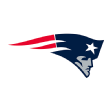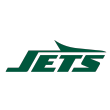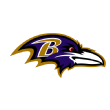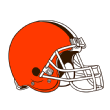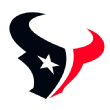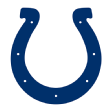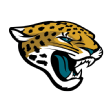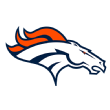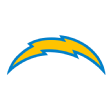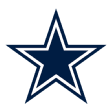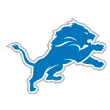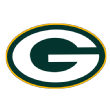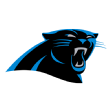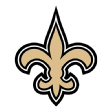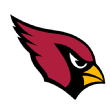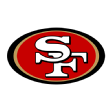The most impactful draft-day trade for all 32 NFL teams

Almost every year it seems a memorable trade happens during the NFL draft as the clock ticks and the phones ring. So which draft-day trade has had the biggest impact -- good or bad -- on each NFL franchise?
We asked our 32 NFL Nation reporters to look back at each team's most meaningful swap on draft weekend. Some brought championships and others pain. All of them were unforgettable.
Scan through all 32 teams by division, or click here to jump ahead to your team:
AFC EAST
Buffalo Bills
The trade: Buffalo sent second- and fifth-round picks in 2004 and a first-round pick in 2005 to Dallas to select quarterback J.P. Losman at No. 22 overall in 2004.
The Bills already had selected wide receiver Lee Evans at No. 13 after missing out on quarterbacks Eli Manning, Philip Rivers and Ben Roethlisberger earlier in the draft. Then-Buffalo general manager Tom Donahoe, in search of his quarterback of the future to replace Drew Bledsoe, traded back into the first round for Losman. The Tulane product spent only one year (2006) as the full-time starter and failed to build on that 3,000-yard season. Had the Bills kept their first-round pick in 2005, they could have selected Aaron Rodgers. -- Mike Rodak
Miami Dolphins
The trade: In 2013, the Dolphins traded their first-round (No. 12) and second-round (No. 42) picks to Oakland to move up to No. 3 and select Oregon defensive end Dion Jordan.
The move turned out to be a big bust, with Jordan contributing little on the field and failing several drug tests -- including one that caused him to be suspended for the entire 2015 season. He eventually was reinstated, retired, then was cut. His Dolphins career ended with only three sacks, and Miami failed to make the playoffs, going 8-8 in each of the two seasons after he was selected. The trade cost the Dolphins a chance to get two key contributors had they stayed put, and a look back at the players selected in the top 50 that year includes Sheldon Richardson (No. 13), Star Lotulelei (No. 14), Desmond Trufant (No. 22), Xavier Rhodes (No. 25), DeAndre Hopkins (No. 27), Travis Frederick (No. 31), Zach Ertz (No. 35), Darius Slay (No. 36) and Le'Veon Bell (No. 48). -- Cameron Wolfe
New England Patriots
The trade: New England acquired receiver Randy Moss from the Raiders for a fourth-round pick on April 30, 2007, the final day of the draft.
What a bargain. Moss went on to set the NFL record for most touchdown receptions in a season (23), giving quarterbackTom Brady the elite No. 1 weapon he has so seldom had over his career. In large part due to Moss' standout season, the Patriots posted a 16-0 regular-season record before they were upset by the Giants in Super Bowl XLII. -- Mike Reiss
New York Jets
The trade: On the morning of the 1980 draft, the Jets sent two first-round picks (No. 13 and No. 20) to the 49ers for the No. 2 pick to select receiver Johnny "Lam" Jones.
It turned out to be a bad move for the Jets, who selected the speedy Jones ahead of future Hall of Famers Anthony Munoz and Art Monk. Jones, who died recently after a long bout with cancer, never lived up to expectations. He finished with only 138 catches and 13 touchdowns. -- Rich Cimini
AFC NORTH
Baltimore Ravens
The trade: In 1999, the Ravens traded their second-round pick (No. 43) for Atlanta's first-round pick in 2000, which they used to land running back Jamal Lewis.
The Falcons selected tight end Reggie Kelly, and the Ravens got what turned into the No. 5 overall pick in the 2000 draft. Baltimore drafted Lewis, who carried the offense during the team's 2000 Super Bowl championship season and recorded the NFL's fifth 2,000-yard season in 2003. -- Jamison Hensley
Cincinnati Bengals
The trade: The Bengals moved from No. 5 to No. 1 overall after sending their first- and second-round picks to the Panthers to select running back Ki-Jana Carter in the 1995 draft.
It was a rare move for a franchise not known for draft-day trades, and the ultimate example of "what could have been" for the team. Carter signed a then-record seven-year, $19.2 million deal, but he played only three seasons with the Bengals. He missed his rookie season with a torn ACL and was never the same. The miss on that trade is representative of the futility of the franchise throughout the 1990s. -- Katherine Terrell
Cleveland Browns
The trade: In 2014, the Browns traded the No. 4 pick to move down to No. 9.
After moving down, the Browns traded the No. 9 pick to move up to No. 8 to take cornerback Justin Gilbert. This is the team that traded out of taking Julio Jones and traded up to take Johnny Manziel. Drafting Gilbert was as large a mistake as taking Manziel; neither was committed to being an NFL player. The better option: Stay at No. 4 and draft linebacker Khalil Mack, one of the best defensive players in the league. -- Pat McManamon
Pittsburgh Steelers
The trade: In 2003, the Steelers traded the No. 27, No. 92 and No. 200 picks to Kansas City for No. 16, which the Steelers used to select safety Troy Polamalu out of USC.
The Steelers are known as conservative when it comes to the draft. Rarely do they make splashy moves. But they needed to improve their secondary 16 years ago, and Polamalu was a true game-changer. They worked the phones in the draft room throughout the first hour of the first round and relied on good relationships with the Chiefs. The result: Pittsburgh got a future Hall of Famer. -- Jeremy Fowler
AFC SOUTH
Houston Texans
The trade: In 2017, general manager Rick Smith landed quarterback Deshaun Watson by trading the No. 25 pick and Houston's first-round pick in 2018 to the Browns for the No. 12 pick.
The Texans were in need of a franchise quarterback after sending Brock Osweiler to Cleveland following his lone season in Houston. In his first two seasons with the Texans, Watson missed time with a torn ACL but completed 66.4 percent of his passes for 5,864 yards with 45 touchdowns and 17 interceptions in 23 games. Houston had gone through eight starting quarterbacks after Bill O'Brien took over as coach in 2014 until Watson put a halt to the quarterback carousel. -- Sarah Barshop
Indianapolis Colts
The trade: On April 27, 2003, the Colts traded a fourth-round pick in 2004 to Houston for a fifth-rounder in 2003. The Colts used that fifth-round pick (No. 138) to select pass-rusher Robert Mathis.
Mathis, who was considered an undersized player coming out Alabama A&M, finished his career with 123 sacks (19th on the all-time list) and was named to five Pro Bowls. -- Mike Wells
Jacksonville Jaguars
The trade: In 2008, the Jaguars traded up from No. 26 to No. 8 to select defensive end Derrick Harvey.
Jacksonville gave up a lot -- No. 26, two third-round picks and a fourth-round pick -- to Baltimore for the No. 8 pick. The Jaguars were coming off a playoff appearance, had signed QB David Garrard to a long-term deal and believed they were close to being a Super Bowl team if they could improve their pass rush. Harvey held out for 38 days, recorded 3.5 sacks as a rookie and totaled 8.0 sacks in three seasons before being cut with two years remaining on his contract. The Jaguars, by the way, wouldn't make the playoffs again until 10 years later. What makes this trade even worse for the Jaguars is the Ravens used the No. 26 pick and one of the third-round picks from the Jaguars to move up to No. 18 and take QB Joe Flacco, a move that resulted in six playoff appearances in the next seven seasons and a victory in Super Bowl XLVII. -- Michael DiRocco
Tennessee Titans
The trade: In 1997, the franchise (then the Oilers) sent two picks (No. 13 and No. 110) to the Chiefs for four selections -- Nos. 18, 81, 116 and 181.
With the No. 13 pick the Chiefs selected Hall of Famer Tony Gonzalez, who went on to become one of the best tight ends in history. Although defensive end Kenny Holmes (No. 18) had a solid NFL career, tackle Scott Sanderson (No. 81) and linebacker Dennis Stallings (No. 181) didn't pan out. The Titans/Oilers traded pick No. 116 and a sixth-round pick (No. 165) to the Saints for pick No. 107, moving up to select defensive end Pratt Lyons. Losing out on a chance to select Gonzalez was a tough pill to swallow. -- Turron Davenport
AFC WEST
Denver Broncos
The trade: During the 2009 draft, the Broncos shipped their 2010 first-round pick to the Seattle Seahawks to move up in the second round to select cornerback Alphonso Smith.
The trade for future Hall of Famer John Elway will always be the franchise's most impactful deal, but it was completed several days after the 1983 draft had finished. Denver also traded up in the first round in 2016 to select quarterback Paxton Lynch, who didn't win training camp battles for the starting job in back-to-back years and then was released when he didn't win the backup job in last summer's training camp -- his third with the team. But the Smith trade is the all-time head-scratcher. He played just one season with the Broncos before he was traded to the Detroit Lions. And the Seahawks used that 2010 first-round pick to select ... safety Earl Thomas. -- Jeff Legwold
Kansas City Chiefs
The trade: In 2017, the Chiefs traded first- and third-round picks plus a first-rounder in 2018 to move up from No. 27 to No. 10 to select Texas Tech quarterback Patrick Mahomes.
This might be the most impactful trade in team history, period. Acquiring Mahomes secured Kansas City's spot near the top of the AFC for the foreseeable future. Last season he became the second quarterback in NFL history to throw 50 touchdown passes and for more than 5,000 yards. That he did so in the season in which he turned 23 suggests Mahomes will be posting big numbers for the Chiefs for years to come. -- Adam Teicher
Los Angeles Chargers
The trade: In 2004, the Chargers traded quarterback Eli Manning to the New York Giants for quarterback Philip Rivers, a 2004 third-round pick (kicker Nate Kaeding) and a 2005 first-round pick (linebacker Shawne Merriman), and a fifth-round pick (tackle Roman Oben).
Manning didn't want to play in San Diego and he got his wish, with Chargers GM A.J. Smith selecting him No. 1 overall and then shipping him to the Giants. In return, the Chargers received Rivers and part of a nucleus that led the Bolts to four straight AFC West titles from 2006 to 2009. Although Manning went on to win two Super Bowls -- and Rivers has yet to reach the NFL title game -- Rivers is 3-0 head-to-head against Manning. -- Eric D. Williams
Oakland Raiders
The trade: On Day 3 of the 2010 draft, the Raiders traded their fourth-round pick in the 2012 draft to Washington for quarterback Jason Campbell.
Campbell was compared to Jim Plunkett by Al Davis after the deal. Yes, a mere three years after Oakland used the top overall pick on JaMarcus Russell, who would be waived 12 days later. In Campbell's first season in Oakland, the Raiders went 8-8 (6-0 in the AFC West) for their first non-losing season in eight years, and he was humming in 2011 as the Raiders got off to a 4-2 start before his season ended with a broken collarbone in Week 6. That set the stage for Hue Jackson's power grab with the "greatest trade in football" for Carson Palmer, and it took years for the franchise to recover. Though he never played for the Raiders again, Campbell, at 11-7, is still the only Raiders quarterback since Rich Gannon played his last game in 2004 to have a winning record for Oakland. -- Paul Gutierrez
NFC EAST
Dallas Cowboys
The trade: In 1990, Dallas traded its first- and third-round picks to the Pittsburgh Steelers to move up four spots to No. 17 to take Emmitt Smith.
The Cowboys had hoped to select linebacker James Francis in the first round when the draft began, but he went to Cincinnati with the No. 12 pick. Smith kept dropping, so the Cowboys made a move for the player who formed the "Triplets" with Michael Irvin and Troy Aikman and helped the team to three Super Bowl wins in a four-year span. All Smith did was become the NFL's all-time leading rusher, league MVP, Super Bowl MVP, an eight-time Pro Bowler and a Hall of Famer. The Smith deal can be traced back to the Herschel Walker trade in 1989, but the draft-day move for Smith made the Cowboys the team of the 1990s. -- Todd Archer
New York Giants
The trade: In 2004, the Giants traded Philip Rivers, a third-round pick in 2004, and first- and fifth-round picks in 2005 to the San Diego Chargers for Eli Manning.
The Chargers took Manning against his will and the Giants selected Rivers at No. 4 overall with the hope that it would net them Manning. It eventually did in a trade that turned into a win-win. The Chargers received Rivers and turned their picks into kicker Nate Kaeding, pass-rusher Shawne Merriman and tackle Roman Oben. The Giants did even better. They won two Super Bowls with Manning, considered by most the best quarterback in franchise history and a potential Hall of Famer. -- Jordan Raanan
Philadelphia Eagles
The trade: In 1995, Philly gave up the No. 12 pick and a pair of second-rounders to Tampa Bay, moving up to No. 7 to select Mike Mamula.
The deal for Mamula, a defensive end out of Boston College whose stock got a significant bump because of his combine performance, still haunts Eagles fans. He wasn't a total bust (31.5 career sacks) but played only five seasons because of injury. The Bucs, meanwhile, used the No. 12 pick to select Warren Sapp and then dealt one of the two second-round picks to move up and select linebacker Derrick Brooks. Both ended up in the Hall of Fame and were centerpieces of a championship team. -- Tim McManus
Washington Redskins
The trade: In 1999, the Redskins traded the No. 12 overall pick and four other picks to Chicago to move up to No. 7, where they selected future Hall of Fame cornerback Champ Bailey.
Before that move, the Redskins had traded the fifth overall pick to New Orleans in exchange for eight draft picks, with two coming in 2000. That gave the Redskins the ammunition to move up for Bailey -- the player they wanted all along. Despite the haul from New Orleans, the Redskins drafted only six players in 1999 and four didn't provide any help. After moving up in the first round, they did it again in the second, selecting tackle Jon Jansen, a solid seven-year starter. Washington did keep the Saints' first-round pick in 2000, which ended up being No. 2, and selected linebacker LaVar Arrington. -- John Keim
NFC NORTH
Chicago Bears
The trade: In 2017, the Bears traded picks Nos. 3, 67 and 111 and a 2018 third-round selection to the San Francisco 49ers to move up one spot and take North Carolina quarterback Mitchell Trubisky second overall.
Chicago had a glaring need at quarterback, but few expected Bears general manager Ryan Pace to go all-in on Trubisky, who started just one full season for the Tar Heels. Trubisky led Chicago to the playoffs last season, passing for 3,223 yards and 24 touchdowns with 12 interceptions (95.4 passer rating). He might never be mentioned in the same breath as the league's elite passers, but Chicago appears to have stabilized its quarterback position for years to come, courtesy of its draft-day deal with San Francisco. -- Jeff Dickerson
Detroit Lions
The trade: In 1993, the Lions sent the No. 8 pick in that draft and a fourth-rounder (No. 89) to the Saints for linebacker Pat Swilling.
The Lions really wanted Swilling -- they had tried to sign him before but failed -- but the deal didn't work out for them. The No. 8 pick became Hall of Fame offensive tackle Willie Roaf. Including Roaf, four of the next six picks were Pro Bowlers. The fourth-rounder turned into Pro Bowl fullback Lorenzo Neal. Swilling was a Pro Bowler in 1993, but he never truly matched his New Orleans production with the Lions, registering 10 sacks before heading to Oakland, where he had 21 sacks in his last three years. -- Michael Rothstein
Green Bay Packers
The trade: In 1991, the Packers traded back with the Eagles from No. 8 to No. 19 in the first round and picked up a first-round pick in the 1992 draft.
Neither one of those picks directly resulted in a player worth noting -- the Packers picked Ohio State cornerback Vinny Clark at No. 19 in 1991 and they traded away the 1992 first-round pick. However, it was that extra first-rounder in 1992 that first-year GM Ron Wolf traded to the Falcons the following offseason for Brett Favre. Without a second first-round pick that year, maybe Wolf wouldn't have made the Favre trade -- a deal that began the turnaround from decades of losing. -- Rob Demovsky
Minnesota Vikings
The trade: In 2012, the Vikings traded back into the first round to select safety Harrison Smith.
The Vikings had already made one splash move during this draft, trading back one spot from No. 3 to No. 4 to get Matt Kalil (the player they wanted all along) and three other draft picks in fleecing the Browns by convincing them that another team was going to trade with the Vikings to get Trent Richardson, the player Cleveland really wanted. But Minnesota's biggest and longest-lasting impact came when general manager Rick Spielman decided he wasn't done on the first night of the draft. Minnesota had been eyeing Notre Dame's Smith but wasn't convinced he'd be there when the Vikings were set to pick again at No. 35 in the second round. To avoid missing out on a future Pro Bowler, Spielman sent a fourth-round pick to Baltimore to move up to No. 29 to draft Smith. Since that day, Smith has become an irreplaceable staple in the Vikings' defense and is routinely regarded as the most versatile safety in the NFL. -- Courtney Cronin
NFC SOUTH
Atlanta Falcons
The trade: In 2011, the Falcons traded five draft picks -- No. 27, their second-round pick (No. 59) and fourth-round pick (No. 124), along with their first- and fourth-round picks in 2012 -- to move up to No. 6 and select wide receiver Julio Jones.
Maybe it sounded like a crazy idea at the time, but general manager Thomas Dimitroff's gamble paid off when Jones developed into arguably the best wide receiver in the game. Meanwhile, none of the players the Browns acquired as a result of those draft picks -- Phil Taylor, Greg Little, Brandon Weeden, Owen Marecic and Trent Richardson -- is currently in the league. Safe to say the Falcons won the trade. -- Vaughn McClure
Carolina Panthers
The trade: In 2008, the Panthers traded picks in the second round (No. 43) and fourth round (No. 109), plus a first-round pick in 2009, to Philadelphia to get back into the first round (No. 19) for offensive tackle Jeff Otah.
The Panthers, who had selected running back Jonathan Stewart at No. 13, felt they were on the verge of a Super Bowl, so they moved up for Otah. He started 25 games his first two seasons, then developed knee issues that basically ended his career. The Eagles turned the 2009 pick (No. 28) into a trade with Buffalo to get tackle Jason Peters, who went on to become an eight-time Pro Bowl selection. The Panthers already had 2006 first-round pick DeAngelo Williams at running back when they took Stewart. They could have taken a tackle at No. 13, and had the option of Jamaal Charles or even Ray Rice in the second round without losing a pick. The domino effect after a 12-4 2008 season was four straight non-winning seasons. -- David Newton
New Orleans Saints
The trade: In 1999, the Saints traded eight picks for Ricky Williams.
Twenty years later, this still reigns as perhaps the most ridiculed trade in NFL history. Saints coach Mike Ditka was so enamored with the Heisman Trophy-winning running back that he sent all of New Orleans' 1999 draft picks, plus a first- and third-rounder in 2000, just to move up from No. 12 to No. 5. In truth, the deal didn't set the franchise back that far (the Saints won their first-ever playoff game in 2000 and wound up trading Williams to Miami for two first-round picks in 2002). But it was a flop in the immediate aftermath, when the Saints went 3-13 in 1999 and Ditka was fired. And those pictures of Ditka in dreadlocks and Williams in a wedding dress will forever live in infamy. -- Mike Triplett
Tampa Bay Buccaneers
The trade: In 1995, the Bucs traded from No. 7 to No. 12 and selected Miami defensive tackle Warren Sapp.
Tampa Bay also received the No. 43 and No. 63 picks, and sent No. 72 to Philly. The Bucs then traded No. 63 and their own second-round pick to the Cowboys to get back into the first round to select Florida State linebacker Derrick Brooks at No. 28. Sapp and Brooks became first-ballot Hall of Famers, marking just the third time in NFL history that two Hall of Famers were selected by the same team in the same round. Tampa Bay transformed into one of the most vaunted defenses in the league for a decade and won Super Bowl XXXVII. Prior to Sapp and Brooks, the Bucs had just one Hall of Famer (Lee Roy Selmon). -- Jenna Laine
NFC WEST
Arizona Cardinals
The trade: In 2017, Arizona traded up with Chicago, from No. 45 to No. 36, to select safety Budda Baker.
It was a major move by the Cardinals for the University of Washington product -- a player who could have a long-lasting impact on their defense. Arizona gave up a lot -- its fourth- and sixth-round picks and a fourth-round pick in 2018 -- for Baker and Chicago's seventh-round pick, but the move has worked. Baker already has established himself as an elite defender on the field, was named to the Pro Bowl as a rookie, and he's also a fan favorite -- a role once occupied by the departed Tyrann Mathieu. -- Josh Weinfuss
Los Angeles Rams
The trade: In 1996, the Rams traded running back Jerome Bettis and a third-round pick to the Steelers in exchange for a second-round pick in 1996 and a fourth-round pick in 1997.
With the second-round pick, the Rams selected tight end Ernie Conwell, and in 1997 the fourth-round pick was bundled in a trade. The Rams deemed Bettis expendable after they selected Nebraska running back Lawrence Phillips with the No. 6 pick in 1996. Bettis went on to win a Super Bowl in his Hall of Fame career. Phillips, who had extraordinary talent but known character issues, was released during his second season. -- Lindsey Thiry
San Francisco 49ers
The trade: In 1985, San Francisco traded its first-, second- and third-round picks (Nos. 28, 56 and 84) to the New England Patriots for their first- and third-round picks (Nos. 16 and 75).
Forget the most impactful draft-day trade in franchise history -- this move has a strong case for the biggest draft-day deal in the history of the league. The defending Super Bowl champion 49ers used the pick to select Jerry Rice at No. 16, helping to elevate the two-time champions into a full-fledged dynasty. Rice went on to set every major receiving record and stake his claim as one of the greatest players in NFL history. The players the Patriots got with their picks -- center Trevor Matich, defensive end Ben Thomas and defensive back Audray McMillian -- combined to play less than five full seasons for the Patriots. -- Nick Wagoner
Seattle Seahawks
The trade: In 1997, the Seahawks traded with Tampa Bay to go from No. 12 to No. 6, where they took future Hall of Famer Walter Jones.
It took only a third-round pick to move up six spots and land one of the best left tackles in NFL history. What's more, the future of the Seahawks was up in the air at the time, with Paul Allen having agreed to buy the team and keep it in Seattle on the condition that the public approve an initiative in June to help fund a new stadium. Then-owner Ken Behring wanted to trade both of the team's first-round picks because he didn't want to pay the hefty signing bonuses, so when Allen stepped up to foot the bill even though he had no assurance that he would eventually buy the team from Behring, it sent a strong message to voters about the type of owner he would be. -- Brady Henderson
Related Video
Related Topics
- SPORTS
- ESPN
- CINCINNATI BENGALS
- NEW ORLEANS-SAINTS
- ATLANTA FALCONS
- HOUSTON TEXANS
- BALTIMORE RAVENS
- NFL DRAFT
- PHILADELPHIA EAGLES
- NFL NATION
- INDIANAPOLIS COLTS
- WASHINGTON REDSKINS
- TENNESSEE TITANS
- JACKSONVILLE JAGUARS
- CAROLINA PANTHERS
- NEW YORK-JETS
- CHICAGO BEARS
- NEW ENGLAND-PATRIOTS
- SEATTLE SEAHAWKS
- DALLAS COWBOYS
- LOS ANGELES-CHARGERS
- ARIZONA CARDINALS
- MINNESOTA VIKINGS
- DETROIT LIONS
- 32 FOR-32
- GREEN BAY-PACKERS
- LOS ANGELES-RAMS
- BUFFALO BILLS
- SAN FRANCISCO-49ERS
- MIAMI DOLPHINS
- NFL
- TAMPA BAY-BUCCANEERS
- DENVER BRONCOS
- KANSAS CITY-CHIEFS
- OAKLAND RAIDERS
- CLEVELAND BROWNS
- NEW YORK-GIANTS
- PITTSBURGH STEELERS




